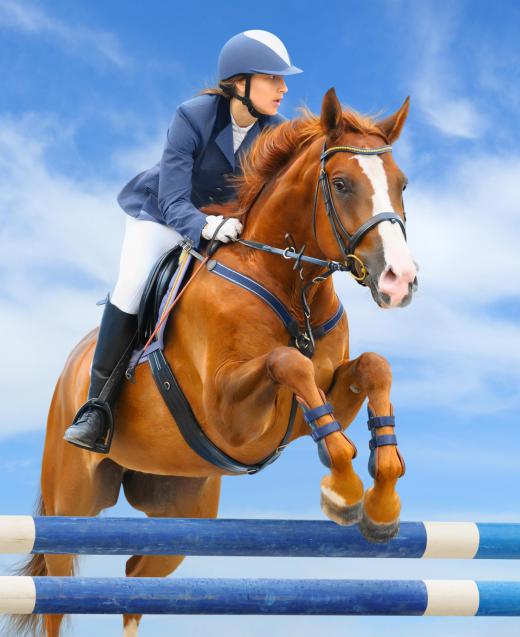A quarter horse is a specific breed of horse that’s perhaps best known for its speed over short distances and its short, stocky build. This sort of breed is originally American, and the American Quarter Horse Association (AQHA) remains the world’s largest registry, though today the horses are bred all around the world. Characteristics include limited white markings on the face and below the knees, heavy muscling, and a gentle nature. These horses are usually the most popular choice for racing, jumping, and rodeo work. Many participate in formal horse shows, too, where things like aesthetics and coloring are assessed by panels of judges. Lineage is particularly important in these sorts of settings. Casual riders often aren’t interested in a horse’s genetic history, but serious investors usually are. Associations like the AQHA usually keep detailed records of all registered horses, and typically also set rules when it comes to things like blood and family history.
History of the Breed

The first horse with quarter characteristics was bred sometime during the early 1600s, and is thought to have been a composite of Arab, Turk, and Barb breeds. All of these sorts of horses were brought to America during this period, and were and crossed with horses from England and Ireland that were already being used on farms and as a mode of transportation. Scholars aren’t sure whether the horse was intentionally bred for its strength and speed or whether these characteristics emerged more as a matter of happenstance, but they are defining features of these horses today.
Identifying Characteristics

While the breed is most widely known for its short-distance racing ability, it is also used to herd cattle, participate in various rodeo events, and for English classes of dressage and show jumping. Horses within the quarter category are usually a bit shorter and stockier than other breeds, and their muscle tone is often slightly enlarged.
Most have what’s known as a “sorrel” coloring, which is reddish brown, light chestnut color. In addition to sorrel, there are 12 colors accepted by the AQHA as “official” or “legitimate” quarter colors: brown; chestnut; gray; dun, which is marked by a light brown body but dark mane and tail; red dun; buckskin; black; bay, which is a dark chestnut with almost black mane and tale; grullo, which is a tan-gray coloring that often features stripes; red roan; blue roan; and palamino, which is a cream or off-white color.
Questions of Horse Heritage

The breed’s bloodline has been preserved by the AQHA, which sets forth a strict set of guidelines in regard to registration. One of many such guidelines is the fact that each foal must have an American Quarter Horse sire, or father, and dam, or mother. In order to keep accurate records of heritage, the AQHA maintains the largest equine registry in the world, with over 3.7 million registered horses. They keep track of all ownership records, performance and produce data, as well as population figures for the breed.

Different horse registries around the world have slightly different specifications, but most default to the AQHA’s requirements. In many respects this organization is seen to be the worldwide authority on the breed and what it means to be a part of it.
The association's headquarters is located in Amarillo, Texas, and the American Quarter Horse Heritage Center and Museum is located right next door. The museum is open to the public and boasts a wide variety of research materials, exhibits, informative videos, and hands-on displays documenting the history and prevalence of the breed throughout history.
Notable Horses Through History
Some of the most famous horses carrying this breed designation include King, who set the standard for the breed, and Go Man Go, who dominated the racing scene by setting three track records and one world record. Dash for Cash, considered one of the greatest sires of racing horses, is also a familiar name to many in the horseracing world, as is Easy Jet who, as a 2-year-old, had 22 wins from 26 starts.
